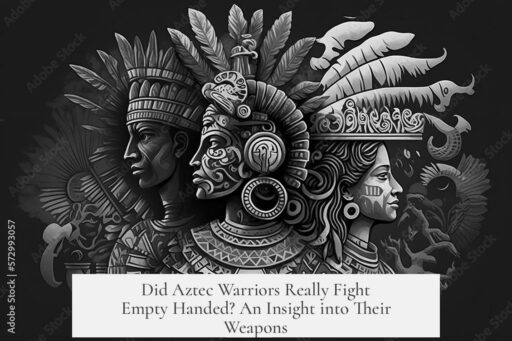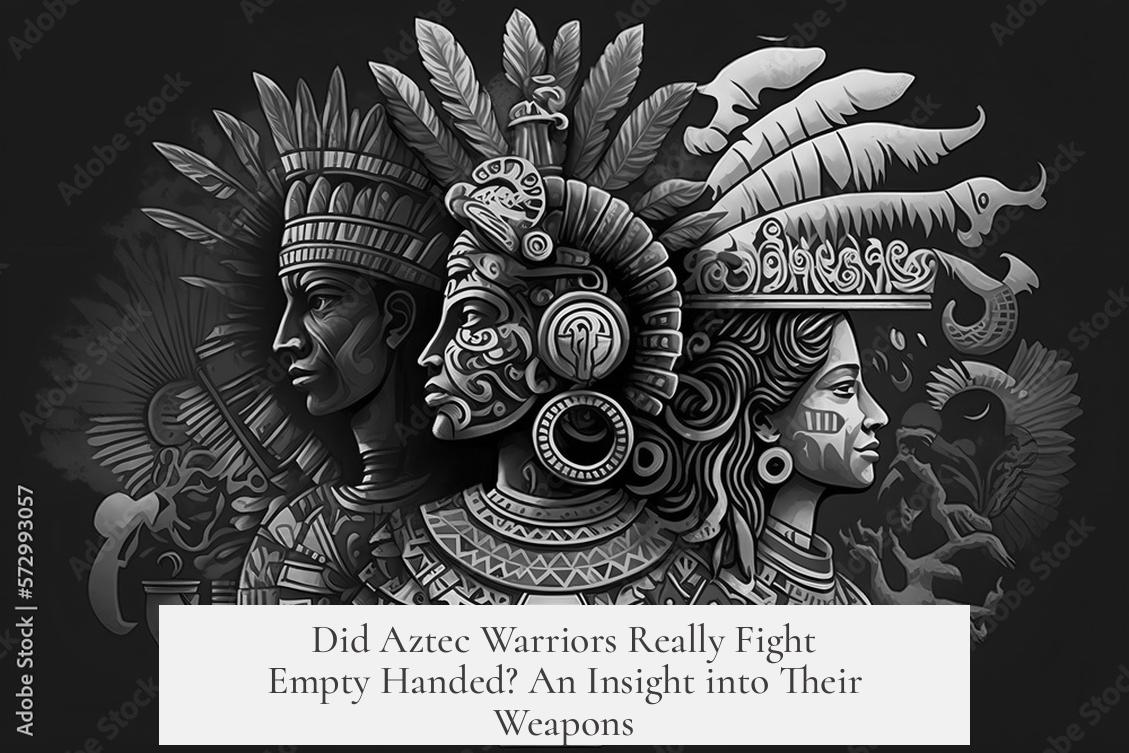Aztec warriors did not go into battle empty handed. They used a variety of weapons, both ranged and melee, that were well suited for warfare. Their array of arms included bows and arrows, javelins launched by atlatls, slings, spears, clubs, and especially the macuahuitl, a formidable obsidian-edged wooden sword.
Aztec military culture was highly developed. Warriors began combat with projectile weapons like slings, darts propelled by atlatls, and arrows. After this initial ranged attack, they closed in for hand-to-hand fighting. Elite warriors often carried macuahuitl and shield for close quarters combat.
| Weapon | Description |
|---|---|
| Bows and Arrows | Combatants used arrows with obsidian, flint, or chert barbs, fletched with turkey feathers. Quivers held about 20 arrows. |
| Atlatl | A spear-thrower that increased range and velocity of javelins or darts. |
| Slings | Made from maguey cactus fiber, used to hurl stones collected on the march. |
| Spears | Standard close-range weapons for throwing or thrusting. |
| Clubs and Macuahuitl | Macuahuitl is a wooden club edged with sharp obsidian blades capable of inflicting severe wounds, including decapitating horses. |
Evidence for weapon use comes from multiple sources. Codices like the Codex Mendoza depict armed warriors in full gear. Stone carvings like the Tizoc Stone feature weapons and warrior captures. The Spanish chroniclers’ reports frequently describe Aztec warriors employing a range of arms effectively.
The macuahuitl holds particular renown. This weapon combined a wooden club with obsidian blades embedded along the edges. According to several eyewitnesses, a single blow could sever a horse’s head. The Spanish even preserved one macuahuitl in the royal armory until 1884.
Despite occasional ritual modifications to reduce lethality—sometimes blades were removed to capture live prisoners—Aztec warriors typically carried lethal weapons. This contradicts any claim that they fought unarmed or only with wrestling skills.
“Claiming the gods didn’t want soldiers using weapons is made laughable by those gods being frequently depicted with weapons, such as Huitzilopochtli wielding a magical fire serpent.” – Scholarly critique of disarming claims
Aztec warfare included training warriors from a young age. Boys received toy bows and arrows shortly after birth, symbolizing their warrior path. Education involved weapons training, preparing them to perform ranged assaults followed by brutal melee combat.
Formations and tactics also demonstrated weapon use. Battles commenced with volleys of arrows and stones. Then, warriors advanced under cover of ranged fire, bringing down enemies with macuahuitl, spears, and shields. Strategies like the “tacatl” formation organized warriors into rows for concerted attacks, while deceptive retreats using the “coyote formation” lured enemies into ambushes.
Aztec military success depended largely on effective weaponry. Throughout their near-century empire, they conquered and controlled Central Mexico by employing well-armed armies. Their weapon systems were widespread across Mesoamerica, with Mayan predecessors using similar arms, indicating a broad tradition.
- Aztec warriors carried bows, arrows, slings, javelins, spears, clubs, and macuahuitl.
- Macuahuitl is a wooden club edged with obsidian blades capable of serious damage.
- They started battles with ranged weapons then engaged in melee combat with elite warriors wielding macuahuitl and shields.
- Weapon use is documented in native art, codices, stone carvings, and Spanish accounts.
- Youths trained with weapons from birth, contrary to claims of unarmed combat only.
- Ritual warfare valued capturing live enemies but did not exclude weapon use; sometimes weapons were modified to reduce lethality.
- The assertion that Aztec warriors fought empty handed is disproven by extensive evidence and scholarship.



